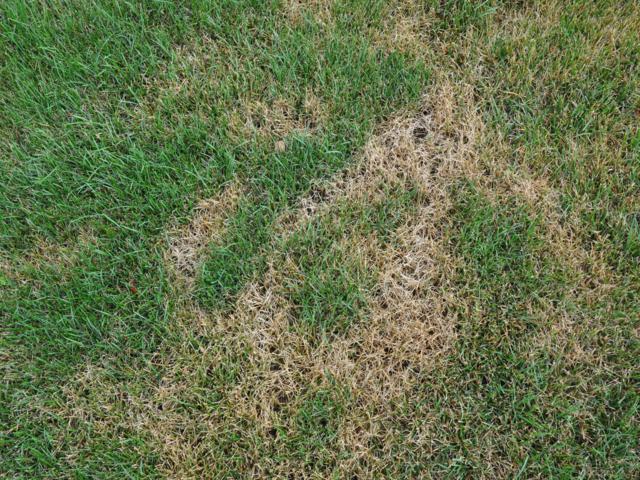How to Manage Pythium Blight
How to manage Pythium Blight begins with knowing what Pythium blight is. It’s a destructive turfgrass disease caused by various species of the Pythium genus. It primarily affects cool-season grasses, such as bentgrass, fescue, and ryegrass, but can also impact warm-season grasses under certain conditions.
How to Identify Pythium Blight
Symptoms of pythium blight include small, circular patches of wilting and darkening grass, often surrounded by a water-soaked, greasy-looking area. The affected grass may appear waterlogged and have a slimy texture in the early morning. Pythium blight thrives in warm and humid conditions, making it more prevalent during periods of high moisture and temperatures.
“It is important to accurately identify Pythium blight because the fungicides that are effective against this disease will not control other diseases (except yellow tuft). Therefore, distinguishing between Pythium blight and other diseases that may occur during the heat of summer (anthracnose, brown patch, dollar spot, gray leaf spot, and summer patch) is especially important.” — Purdue University — Turfgrass Disease Profiles
How to Manage Pythium Blight
Proper irrigation, drainage, and mowing can be essential to manage pythium blight. However, it’s crucial to identify and address contributing factors like excessive thatch or poor soil drainage to prevent recurrence. Early detection and intervention are key to effectively managing pythium blight and minimizing damage to turfgrass.
“Turf with lush growth and excessive nitrogen fertility is especially vulnerable to infection. The Pythium fungus overwinters in soil and plant debris. Spread is associated with water movement.” — Kansas State Turf Problem Solver
Pythium Blight is Serious
Pythium blight is a severe disease that can affect your lawn and a wide range of plants, including vegetables, fruits, and ornamentals. It typically starts as a water-soaked lesion on the stem or roots of the plant. The lesion can quickly spread, causing the plant to wilt and die. In some cases, it can destroy the entire plant or large areas of your lawn within a few days.
Here are four actions you can take to help prevent Pythium blight:
Using disease-free seeds and plants
Avoiding planting in poorly drained soils
Watering plants at the base to avoid wetting the leaves
Applying a fungicide to the soil
If you think your plants may have Pythium blight, it is important to act quickly. The disease can spread rapidly and cause significant damage. “Due to the aggressive nature of the pathogen and the potential for severe turfgrass loss, fungicides are essential tools for Pythium control.” — Michigan State Extension — Pythium Blight
The best answer to the title of this post “How to Manage Pythium Blight” might be to call Berger Hargis, 317-243-0100.
How Can We Help You?
Berger Hargis has a company philosophy of providing personal excellence for all our services. Our growth and success have been due entirely to our commitment to honest, excellent customer service. The company has been built on the referral business we have received due to this philosophy.
We work with residential customers and businesses in Central Indiana, Contact Us for a free analysis from one of our trained turf specialists.
About the Author
Randy Clark is a speaker, coach, and author. He publishes a weekly blog at Randy Clark Leadership.com. Randy is passionate about social media, leadership development, and flower gardening. He’s a beer geek, and on weekends he can be found fronting the Rock & Roll band Under the Radar. He’s the proud father of two educators; he has four amazing grandchildren and a wife who dedicates her time to helping others. Randy is the author of the Amazon bestseller The New Manager’s Workbook, a crash course in effective management.
Go Back







